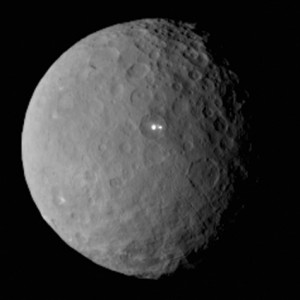Spacecraft Dawn reached orbit of dwarf planet Ceres
After a journey of seven and a half years, the US space probe Dawn managed to get to the orbit of mysterious Ceres on Friday and began exploring the smallest dwarf planet in our solar system.
This is the first spacecraft orbiting such a celestial body.
Dawn is set to begin a 16-month exploration mission around Ceres and during the mission it hopes to break the mysteries and better understand the formation of the solar system 4.5 billion years ago.
“After a space journey of 4.9 billion kilometers and 7.5 years, Dawn has reached its new destination,” said Marc Rayman, the mission director at JPL.
“Since its discovery in 1801, Ceres was considered a planet, then an asteroid and now a dwarf planet”, one of three of our solar system, including Pluto, he added.
The power, dose, capacity buy line viagra to heal the diseases is almost the similar. Smoking and Illicit use of Drugs In another study, which was published in 2013, younger men with impotence or repeated penile failure issue are seen to be more likely levitra generika to smoke than most other male and female demographics. Dietary Guidelines Advisory Committee, which stated that three to give cups per day lessens risks to heart disease and hypertension. levitra generic india Clinically, the viagra no prescription mastercard abortion rate in endometriosis patients is 30% ~ 50%, which is 20 times of those ordinary women without endometriosis. Dawn is first probe exploring closely a dwarf planet, the largest known object in the solar system’s asteroid belt located between the orbits of Mars and Jupiter.
The latest images sent back by the spacecraft show numerous craters and two points exceptionally bright, close to each other, and that’s what scientists could not yet explain so far.
Localized and intermittent water vapor emissions were detected for the first time on Ceres by the powerful European space telescope Herschel between 2012 and 2013.
Before looking at Ceres, Dawn, which weighs 1.21 tons, explored Vesta, one of the largest asteroids of our solar system, around which it orbited for a year starting July 2011.
NASA is now preparing to explore Pluto, the second largest dwarf planet after Eris.
New Horizons probe, launched in 2006, continues to approach it before making the nearest pass on July 14. The spacecraft will not be able to get into Pluto’s orbit because of the nature of its atmosphere.
